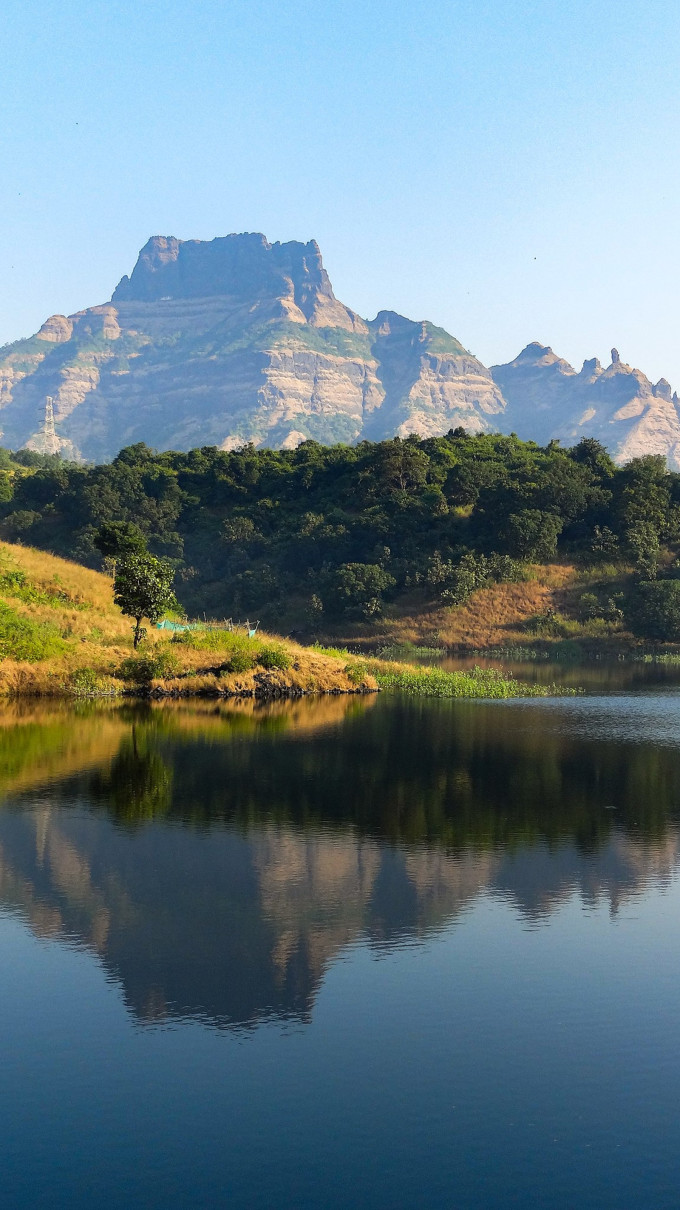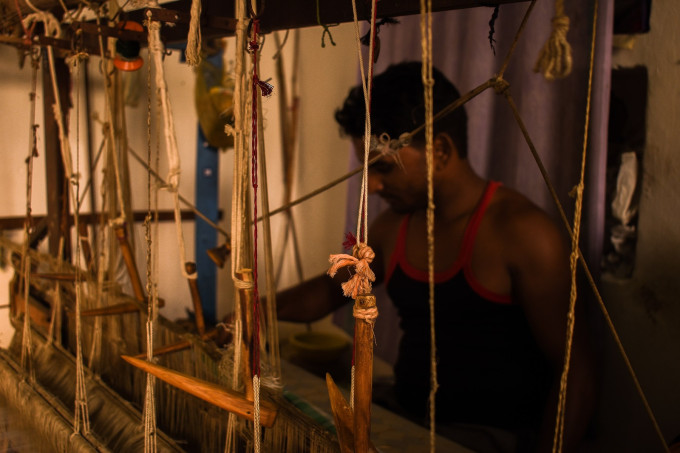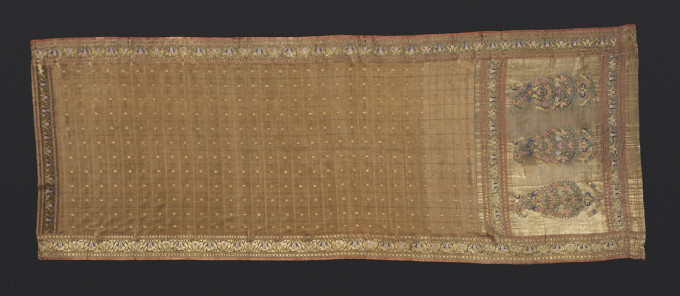How Chanderi became the ‘jewel of Madhya Pradesh’
The year is 1985. A young Anju is visiting the village of Chanderi in Madhya Pradesh, nestled between hills and the Betwa river. She will soon set up her own atelier and be known as fashion designer “Anju Modi”. The village of Chanderi is where it all began. “I stayed at an artisan’s house. They were gracious enough to show me the ancient weaves of Chanderi. It inspired me and helped me learn,” Modi tells me.
Hailing from its eponymous village in the heart of India, Chanderi fabric is a luminous jewel in India’s textile heritage. Its ethereal nature, like a whisper caught in the wind, is characterised by a delicate interplay of silk and cotton threads, captivating connoisseurs for centuries.

The allure of Chanderi lies not merely in its appearance but in the skill of its weavers. With deft fingers and patient hearts, they transform raw materials into masterpieces, each thread and motif carrying the legacy of generations of artisans.
 A view of Chanderi village from Gadeshwar dam (Source: Wikimedia Commons)
A view of Chanderi village from Gadeshwar dam (Source: Wikimedia Commons)
Chanderi’s roots trace back to the Vedic period when Lord Krishna’s cousin, Shishupal, established it, says Saroj Bala, a professor at Pearl Academy’s department of fashion. However, it gained prominence in modern India in the 13th century, according to Modi, coinciding with the emergence of Indian miniature paintings featuring its diaphanous weave.
“Koshti weavers from Jhansi settled in Chanderi village in the 13th century. Originally patronised by the Mughals and woven in pure gold for royalty, Chanderi fabric evolved when weavers discovered Japanese silk in the 1930s, replacing cotton warps with silk,” Bala explained during an interaction with indianexpress.com.
How is Chanderi made and what makes it special?
Traditional Chanderi weaving involves artisans meticulously interlacing fine silk and cotton threads, with the occasional inclusion of zari, or gold and silver threads, adding to its opulence. The resulting fabric is renowned for its lightness, transparency, and subtle shimmer, earning it the moniker “jewel of Madhya Pradesh”.
 The allure of Chanderi lies not merely in its appearance. The weavers, with deft fingers and patient hearts, transform raw materials into masterpieces (Source: Wikimedia Commons)
The allure of Chanderi lies not merely in its appearance. The weavers, with deft fingers and patient hearts, transform raw materials into masterpieces (Source: Wikimedia Commons)
According to designer Pallavi Singh of ARCVSH, Chanderi’s versatility shines in various garments. Initially woven into saris, the fabric now finds expression in lehengas and contemporary ensembles. “Nowadays, weavers are extremely innovative, and they’re weaving the sari with fabrics like organza and even incorporating different patterns, like stripes, into the mix,” Singh said.
View this post on Instagram
A post shared by Samantha (@samantharuthprabhuoffl)
The magic of Chanderi lies in its unique weaving technique, creating a mesmerising moiré effect reminiscent of water ripples. This distinctive characteristic, unattainable through post-production processes, elevates Chanderi to an extraordinary status in the world of textiles, said Bala. The fabric’s softness and drape, combined with its inherent lustre, make it a coveted choice for designers and fashion enthusiasts alike.
A simple Chanderi sari takes 15-20 days to make, and this time can extend to two to three months if intricate techniques like ‘the jaal’ are introduced, said Modi.
What are silk and cotton Chanderis?
View this post on Instagram
A post shared by Rhea Kapoor (@rheakapoor)
Chanderi was conventionally crafted using a blend of silk and cotton, but today, variations with pure cotton or silk are also available. According to Singh, a traditional Chanderi sari contains 10-12 per cent silk, with higher percentages classifying it as silk Chanderi.
For cotton Chanderi, the cotton yarn is mercerised to enhance its lustre, dye affinity, and softness, giving it the name cotton Chanderi.
Beyond its aesthetic appeal, Chanderi offers exceptional comfort, making it ideal for the monsoon season. Its lightweight, breathable nature ensures a cool and comfortable experience, even in humid conditions, and its quick-drying ability is an added advantage during the rainy months.
How can you differentiate between real and fake Chanderi?
Over the centuries, Chanderi has evolved while preserving its core essence. Handloom remains the epitome of Chanderi craftsmanship, but powerloom variations have emerged to meet modern market demands.
 Over the centuries, Chanderi has evolved while preserving its core essence. (Source: Wikimedia Commons)
Over the centuries, Chanderi has evolved while preserving its core essence. (Source: Wikimedia Commons)
According to Modi, powerloom Chanderis made with pure cotton and silk yarns “cannot be called fake.” They reduce the time and effort required by artisans, and are “much cheaper” than handloom Chanderi, which has “more fluidity and lustre” in comparison.
Handloom weaving produces Chanderi with superior quality and a subtle sheen, featuring a unique interplay of light creating the shimmering effect known as moiré, explained Bala. Singh said that genuine Chanderi is softer, smoother, and drapes effortlessly, while fake Chanderi often feels stiffer and less fluid due to the use of materials like nylon silk.
Singh also said that genuine Chanderi is typically more expensive due to its labor-intensive production process. She advises checking for spotty dye as an indicator of fake Chanderi, which struggles to dye evenly because of impure yarns.
📣 For more lifestyle news, click here to join our WhatsApp Channel and also follow us on Instagram
Disclaimer: The copyright of this article belongs to the original author. Reposting this article is solely for the purpose of information dissemination and does not constitute any investment advice. If there is any infringement, please contact us immediately. We will make corrections or deletions as necessary. Thank you.
